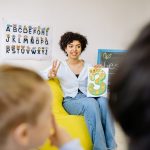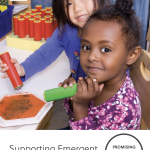Bilingual Books for Emergent Bilinguals
 Bilingual books are not about simply placing the books in your library and hoping they will get utilized by your students. Likewise, the books are not an answer to diversity issues in your classroom teaching. Bilingual books deal with the same issues that monolingual books address: colorism, gender, and more.
Bilingual books are not about simply placing the books in your library and hoping they will get utilized by your students. Likewise, the books are not an answer to diversity issues in your classroom teaching. Bilingual books deal with the same issues that monolingual books address: colorism, gender, and more.
These social issues are global, so similar themes may be observed within these texts as well. However, when bilingual books are woven into the classroom in authentic and critical ways, the classroom culture and environment grow in ways that cannot be measured.
Bilingual Books in the Classroom
There are several ways you can use bilingual books in your classroom.
Library Section
You can highlight having a bilingual text set in your classroom library. Make use of the books during read-alouds or shared reading. Then make sure you highlight where students can locate the books after you are finished.
Multiple Perspectives
Bilingual books can highlight historical journeys in American history from new perspectives and often add authentic voices to your classroom. In other words, build a text set that includes Sylvia and Aki as well as Separate Is Never Equal: Sylvia Mendez and Her Family’s Fight for Desegregation.
Home-to-School Connection
Bilingual books can be used as a bridge between your classroom and your students’ homes. Families whose first language is not English may appreciate the bilingual books being used and your highlighting of those texts. However, note that not all families want their children focused on the home language while in school.
Cultural and Global Knowledge
Bilingual books can be used to enhance your students’ cultural and linguistic knowledge of languages around the world. From the alphabetic systems to characters, students learn various modes of communicating across countries and continents.
A Love of Language
While every school cannot be a dual immersion program, students can still be exposed to various languages and begin to learn those words and phrases. This could spark a continued love and passion for a particular language that could last a lifetime.
Empathy Building
At times, students are not aware of the struggles our English language learner (ELL) students experience learning English. When you use bilingual books that connect to your ELL students’ home languages, you place them in a position of power and expertise. They know how the language should sound and how to assist others with pronunciation. This creates an environment of understanding for all involved.
Excerpted from “Build Your Stack: Bilingual Books for Emergent Bilinguals” from the National Council of Teachers of English blog. Read the full post online.







